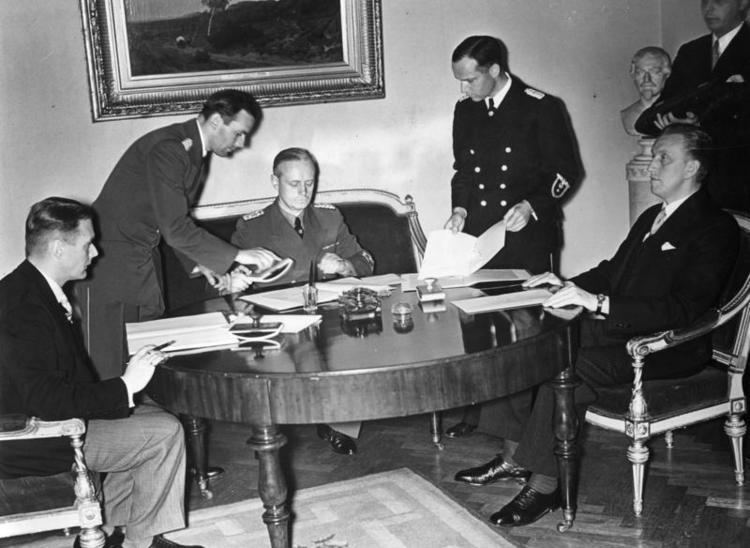 | ||
The German–Latvian Non-Aggression Pact was signed in Berlin on June 7, 1939.
In light of the German advance in the east, the Soviet government demanded an Anglo–French guarantee of the independence of the Baltic states, during their negotiations for an alliance with the Western Powers. The Latvian and Estonian governments, ever suspicious of Soviet intentions, decided to accept a mutual non-aggression pact with Germany. The German–Estonian and German–Latvian Non-aggression pacts were signed in Berlin on June 7, 1939 by Latvian foreign minister Vilhelms Munters and Joachim von Ribbentrop. On the next day Adolf Hitler received the Estonian and Latvian envoys, and in course of this interviews stressed maintaining and strengthening commercial links between Germany and Baltic states. Ratifications of the German-Latvian pact were exchanged in Berlin on July 24, 1939 and it became effective on the same day. It was registered in League of Nations Treaty Series on August 24, 1939. The pact was intended for a period of ten years.
The pacts were intended to prevent western or Soviet powers from gaining influence in the Baltic States and thus encircling Germany (non-aggression pact with Lithuania was concluded in March after the 1939 German ultimatum to Lithuania regarding the Klaipėda Region). These states were to provide a barrier against any Soviet intervention in a planned German–Polish War.
Nazi Germany offered to sign non-aggression pacts with Estonia, Latvia, Finland, Denmark, Norway and Sweden on April 28, 1939. Sweden, Norway, and Finland rejected the proposal. First drafts were prepared the first week of May, but the signing of the treaties was twice delayed due to Latvia's requests for clarification.
